Flower Decembrist - varieties and growing rules
Decembrist or Rozhdestvennik is a perennial indoor plant, which belongs to the cactus family. Its official name is Schlumberger or Zygokactus. The plant belongs to epiphytes and has practically nothing in common with cacti.
Content:
- General information about the Decembrist flower
- Types of the Decembrist
- Decembrist varieties
- Flower care
- Reproduction of the Decembrist
- Diseases and pests
General information about the Decembrist flower
The homeland of the Decembrist is South America, where it is widespread in the territories of humid forests. Growing on tree trunks, Zygocactus blooms in the hot summer months of the tropics. During this period, autumn ends on the territory of cold regions and winter begins.
The peak flowering occurs in the month of December, during the period of Catholic Christmas, from which the popular name Decembrist or Rozhdestvennik came from.
The appearance of the plant resembles a low wood or bush with drooping branches. Its height can reach 50 cm. The stems are a series of flattened, wide and dense jointed shoots. The buds form at the ends of the branches. The stems branch weakly; over time, their lower part begins to grow stiff.
The flowers are tubular, multi-tiered, colored in white, pink, orange, purple, red, depending on the variety or species. The flowers' stamens are long and hang gracefully, giving the Decembrist a special charm. The root system of the plant is weak, so insufficient care can lead to the death of the entire bush. Flowering begins in December and can last 2-3 months.
Types of the Decembrist
The main color of the Decembrist's petals is pink-lilac. But thanks to breeders who annually bring out new hybrids and varieties, the color palette has increased significantly.
- Decembrist truncated. This species is represented by tall plants up to 50 cm. The stems are large, articulated, drooping, extended from the trunk by 30 cm, painted in a light green tone. Parts of the stems are shaped like serrated leaves, thick and flat. The flowers are large, up to 5 cm in length, formed at the ends of the shoots. The petals are pointed, painted in white, pink, purple, red and other colors, depending on the variety. After flowering on the branches appear fruit - reddish berries, the length of which is no more than 1 cm.
- Decembrist bouclei. The height of the plant can reach 50 cm. Its branches consist of glossy, fleshy, dense segments that resemble leaves in appearance. They are painted in a dark green tone and have sharp teeth at the edges. The flowers are long, up to 8 cm, tubular, multi-tiered. The petals, pointed at the edges, can be colored white, yellow, purple or other varieties depending on the variety. This plant begins to bloom in November and, with proper care, can last until March.
- Decembrist russeliana. The bush of this species of Decembrist grows only 30 cm. Its drooping branches consist of flat, fleshy segments that resemble a small leaf in shape. They are painted in a dark green tone. Branches of this species can stretch more than 70 cm in length. Each individual segment has a pronounced vein and grooved edges. The flowers are tubular, have several tiers of pointed petals.They are painted in red, purple and other colors. Flowering begins in late spring and lasts for several months.
- Decembrist Gertner. This species is quite large. The stems consist of segments, the length of which is 7 cm. In shape, they resemble a leaf, oblong, fleshy, dense. The flowers are large, multi-tiered, with a long hanging pistil. The petals are pointed, elongated, their color depends on the variety.
Decembrist varieties
The most popular varieties of the Decembrist:
- Golden Fever. The variety has large, multi-tiered, tubular flowers, the color of which is bright yellow. The stems are drooping, the segments are fleshy, colored in a green tone.
- Malissa. This variety is compact. Stems are short, segments are small, glossy. The flowers are large relative to the bush, multi-tiered, painted in a white tone. The petals are rounded. The pistil is pink, long, drooping. Flowering begins in late autumn and can last 3-4 months.
- Dark Eve. A small flower with drooping stems. The flowers are white, the petals are painted pinkish at the ends. It blooms profusely and for a long time.
- Beach Dancer. The bush has long drooping stems, which are made up of segments. Flowers are tubular, multi-tiered. The petals are painted in salmon color, along their edges there is an orange edging. The flower tube is white. Long-lasting flowering.
- Chris Kringle. This variety has a compact bush. Segments are fleshy, firm, glossy, tinted green. Flowers are tubular, multi-tiered. The petals are pointed, painted in a bright red tone. Long flowering.
- Peach Perfe. Bush, small in size, produces vertical shoots. The stems are made up of small, leaf-shaped segments. The flowers are small, multi-tiered, completely peach-colored. It blooms profusely and for a long time.
- Windsor. A large shrub with long drooping shoots that consist of segments. The flowers are large, multi-tiered, tubular. Their color goes from the white middle, and towards the edges turns into a rich purple tone. It blooms profusely and for a long time.
Flower care
The Decembrist belongs to unpretentious plants and easily gets along with any neighbors. But, due to its tropical origin, it still requires little attention.
When choosing a place in the room for a pot with Christmas, it should be borne in mind that in nature it grows in forests, where direct sunlight rarely falls. Therefore, a well-lit window sill is suitable, but without direct rays, or with shading for a flower. But it is also impossible to deprive lighting, since buds will not be tied on the branches. During the winter months it does not need additional lighting.
It does not need to maintain the temperature regime. But, if the column of the thermometer drops below 0 degrees, the flower dies.
He also does not tolerate heat above +35 degrees, all the stems dry out completely. Poorly tolerates drafts. In the spring and summer period, it is recommended to expose the plant pot to the open air, for example, on a terrace or balcony. At the same time, do not allow direct sunlight to hit the stems, as burns may occur.
Every year the field of the flowering period is recommended to form a bush:
- To do this, you need to unscrew the extra segments. Trim and it is not recommended to pinch off, since the damaged areas heal for a long time and can rot, damaging the entire stem.
- This formation stimulates the regrowth of lateral shoots, which gives the plant additional splendor.
- It will also increase the number of buds and flowers.
TO watering The Decembrist should be treated with special attention. The plant does not tolerate swampy soils, so it cannot be poured. But, during the period of formation and buds, the soil should be moderately moist all the time. During this period, the flower is watered regularly and abundantly. After flowering watering cut slightly. From mid-spring to September, water is given to the flower as the earthen clod in the pot dries out.In the month of September, it is recommended to move the flower to a cooler place and reduce watering - this is a good preparation and stimulation for abundant flowering.
Flower feeding:
- During the period of growth, development of the flower, as well as during the flowering period, it is necessary to make mineral fertilizers into the soil.
- Top dressing should contain substances such as phosphorus and potassium, and a low nitrogen content.
- Strong nitrogen-containing fertilizers are contraindicated for Decembrist, they can cause rotting of the roots.
Transplanted plant in the spring, after the complete end of flowering. To do this, select a pot slightly larger than the previous one. A good drainage layer is laid on the bottom to remove excess moisture. The soil can be purchased at a specialty store or supermarket. You can also cook it yourself. To do this, sod soil and sand are mixed and the same amount of leafy earth is added to the mixture. It is recommended to add some more charcoal. For young plants transplant it is recommended to carry out annually, for adult flowers - as needed.
Reproduction of the Decembrist
The Decembrist reproduces with the help cuttings... To do this, after flowering, in the spring, branches with 3-4 segments are cut from the plant. The cut site must be dried and process charcoal. Thereafter, cuttings placed in containers with wet sand for rooting... You can cover the twigs with jars or build a greenhouse for them.
Containers with cuttings are placed in a place with medium illumination.
Periodically, the greenhouse is removed and the plants are ventilated. In a month, a new segment should appear on the branch. This is an indicator that rooting was successful. After another 3-4 weeks, small sprouts can be transplanted into separate pots.
Diseases and pests
Decembrists are quite resistant to diseases... The appearance of lethargy or drying out signals improper care. The soil of the plant must be sufficiently moist. If a crust appears on the surface, this is an indicator of a lack of moisture. If the substrate becomes viscous, then watering must be reduced.
Of the pests, spider mites and mealybugs can harm the plant.
When the first signs of these insects appear, it is recommended to immediately treat the entire flower and all neighboring plants with special preparations that can be purchased at a gardening store.
Decembrist is one of the most popular and common indoor flowers. You can meet him in almost any apartment or public institution. These are mainly small flowers with pinkish purple flowers. Recently, the popularity of zygocactus has begun to gain momentum again. Therefore, in flower shops there are representatives with white, yellow, red and other colors of petals.
More information can be found in the video.




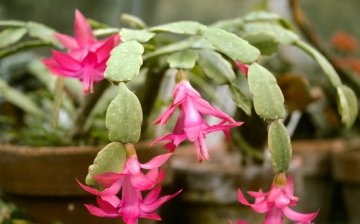
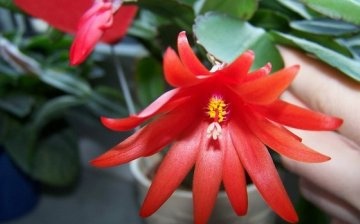
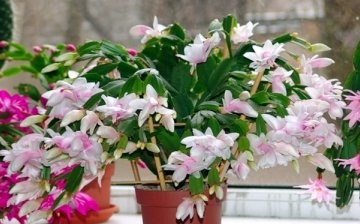

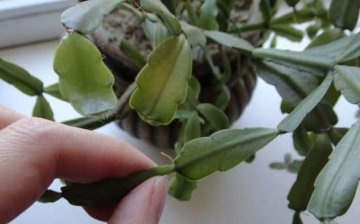
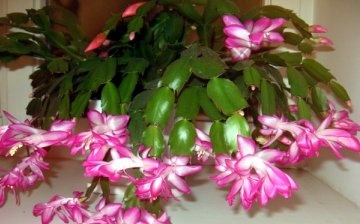








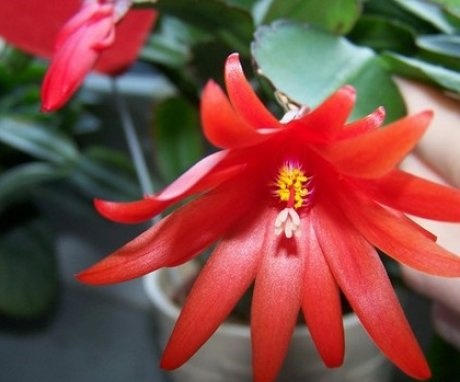
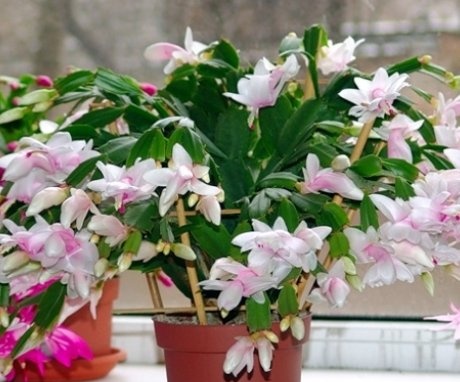
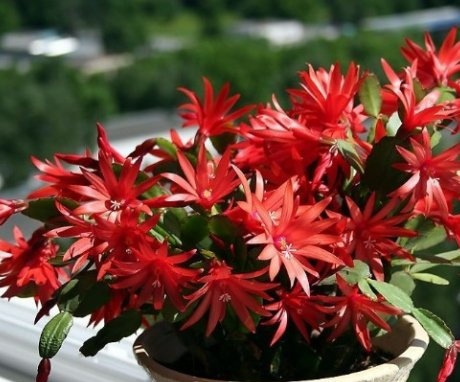
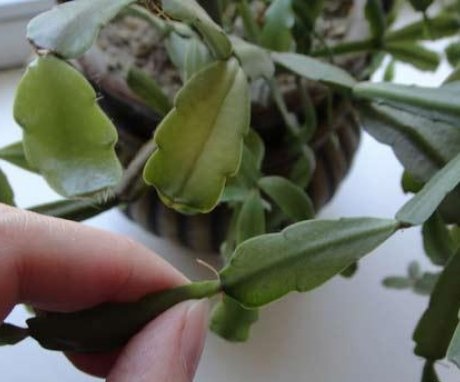
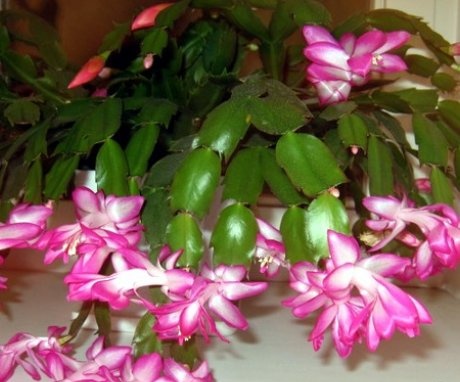
I love this flower very much. A wonderful informative article about him, there is something to learn. At first I had slight problems with flowering, but then I learned that in order to stimulate flowering, you need to lower the temperature! So, I leave my Decembrists on the loggia until November, where I have about 12-15 degrees Celsius. Buds appear quickly, bloom very profusely!